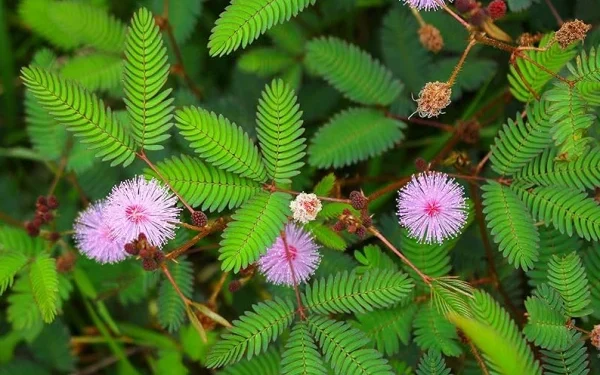Nature has long been a source of wonder, and among its many marvels is the ability of certain trees to seemingly “predict” the weather. While not scientifically classified as meteorological instruments, several tree species exhibit visible changes in response to environmental cues before rainfall. These reactions, influenced by changes in humidity, barometric pressure, and atmospheric conditions, have earned them the nickname of “rain-predicting trees.”
In many cultures and regions, farmers, gardeners, and naturalists have used these tree behaviors to anticipate rainfall, especially in the absence of modern weather forecasting tools. Let’s delve into some of the most fascinating trees that are believed to forecast rain and the science behind their behavior.
1. Pine Tree (Clusia rosea) – The Most Famous Rain Indicator
🌲 Scientific Name: Clusia rosea
The pine tree, particularly Clusia rosea, is one of the most recognized examples of a rain-predicting tree. This tree is often seen reacting to environmental changes that precede rainfall. One of the most notable signs is the curling or bending of its leaves before it rains.
🔍 Why Do Pine Tree Leaves Curl Before Rain?
The changes observed in pine trees before rainfall can be attributed to two key natural factors:
- Increase in Humidity: As rain approaches, the relative humidity in the air increases. This moisture can cause the leaves and bark to absorb water, resulting in physical changes like curling or drooping.
- Drop in Atmospheric Pressure: The decrease in air pressure that typically precedes rainfall is sensed by the cells of the tree. This change affects the internal pressure of plant tissues, leading to noticeable shifts in leaf structure.
These subtle movements may not always be apparent to the casual observer, but for those attuned to nature’s signs, they are clear indicators of incoming precipitation.
🎄 Did You Know?
A specific variety of Clusia rosea is often used as a Christmas tree in Western cultures. Its dense foliage and unique leaf structure make it an aesthetically pleasing choice during the holiday season, adding cultural as well as ecological value to the species.
2. Texas Sage (Leucophyllum frutescens) – The Flowering Forecaster
🌿 Scientific Name: Leucophyllum frutescens
Also known as “barometer bush” or “cenizo”, the Texas sage is a shrub native to the southwestern United States and northern Mexico. It is widely known for its ability to bloom beautiful purple flowers shortly before it rains.
🌸 How Does Texas Sage Predict Rain?
Texas sage doesn’t wait for rain to bloom—it anticipates it. This unusual behavior occurs due to:
- Sensitivity to Atmospheric Pressure: When the air pressure drops ahead of a storm, the Texas sage often produces vivid purple blooms, sometimes even in arid conditions.
- Reaction to Increased Moisture in the Air: Even before rainfall hits the ground, moisture in the atmosphere triggers the flowering mechanism in this resilient desert plant.
Texas sage has adapted to the harsh, dry climates of the American Southwest, making it a reliable and picturesque rain forecaster for those living in drought-prone areas.
🌿 Cultural Importance
In Texan folklore, the blooming of Texas sage is often regarded as a sign of blessings, good fortune, and much-needed rain. Landscapers and homeowners also value it for its low water needs and ornamental beauty.
3. Mimosa Pudica – The Sensitive Rain Responder
🌱 Scientific Name: Mimosa pudica
Commonly known as the “touch-me-not” plant, Mimosa pudica is famous for its unique ability to fold its leaves inward when touched or stimulated, a process known as thigmonasty.
🌧 How Does Mimosa Pudica React Before Rain?
Apart from reacting to touch, this fascinating plant is also sensitive to:
- Humidity Changes: As humidity levels increase prior to rain, the plant responds by folding its leaves, a mechanism thought to protect it from excessive moisture or to reduce the risk of fungal infections.
- Light Sensitivity: As cloud cover thickens ahead of rainfall, light levels drop. Mimosa pudica detects this change and may fold its leaves in anticipation of lower light conditions and potential rain.
This dual sensitivity makes the Mimosa pudica both a captivating plant to observe and a functional natural rain indicator.
How Do Trees Detect Rain? The Science Behind the Phenomenon
While these trees are not meteorologists, they possess natural sensors that allow them to respond to environmental cues. Their behaviors are based on evolutionary adaptations that help them survive in changing climates. Here’s how:
🧪 1. Humidity Sensors
Many plants, especially those in tropical or arid climates, have developed tissues that respond to increases in atmospheric moisture. This helps prepare them for rain, reducing the chances of physical damage or nutrient washout.
🌬 2. Barometric Pressure Sensitivity
Changes in air pressure can affect the internal water pressure (turgor pressure) of plant cells. Some plants detect these changes and adjust their physiology accordingly—manifesting as leaf curling, blooming, or drooping.
🌥 3. Photoreceptors and Light Levels
Rain often brings overcast conditions. Some trees, especially Mimosa pudica, use light-sensitive cells to adjust their behavior in anticipation of lower light availability.
Why Are Rain-Predicting Trees Important?
🌎 Environmental Indicators
These trees are vital bioindicators, helping ecologists monitor environmental changes. Their responses can offer early warnings of climate shifts, droughts, or rainfall trends.
🧑🌾 Traditional Farming and Indigenous Knowledge
Long before modern meteorology, farmers and indigenous communities relied on these tree signals for crop planning and water conservation. Even today, in regions with limited technology access, these plants serve as valuable natural forecasting tools.
🏡 Urban Landscaping and Gardening
In urban areas, incorporating rain-sensitive plants like Texas sage and Mimosa pudica into home gardens can offer both aesthetic value and functional benefits, such as moisture management and natural rain indicators.
Other Plants That React to Weather
While pine trees, Texas sage, and Mimosa pudica are the most well-known, other plants also show weather-sensitive behaviors:
- Lily of the Valley (Convallaria majalis): Known to emit a stronger fragrance before rain.
- Tulips: Sometimes close their blooms ahead of storms.
- Dandelions: May retract their flowers as rain approaches to protect pollen.
Conclusion: Nature’s Subtle Signals Remain Relevant
The concept of rain-predicting trees might sound mythical, but the observable reactions of certain plant species to environmental shifts offer compelling proof of nature’s predictive capabilities. These trees, through leaf movement, flowering patterns, and sensitivity to atmospheric changes, provide insights into upcoming weather events.
As we continue to seek sustainable living and reconnect with nature, observing these natural weather indicators can enrich our understanding of ecological systems and even inspire better harmony between technology and tradition.

























